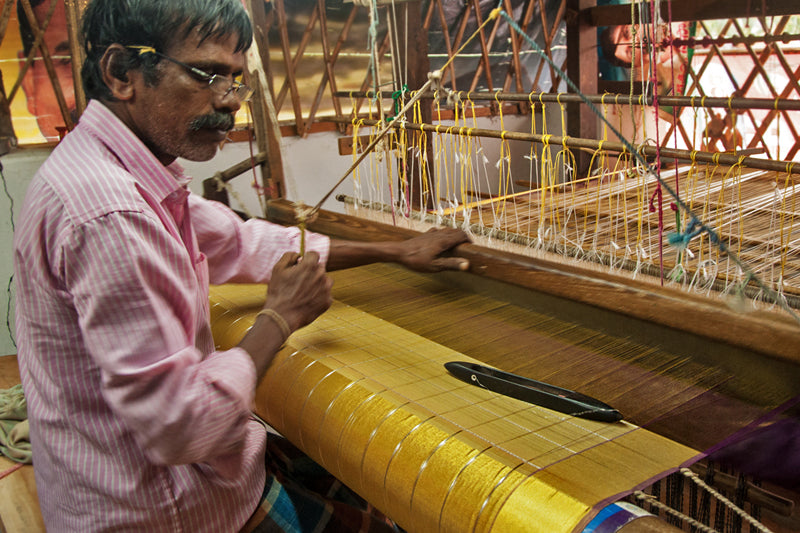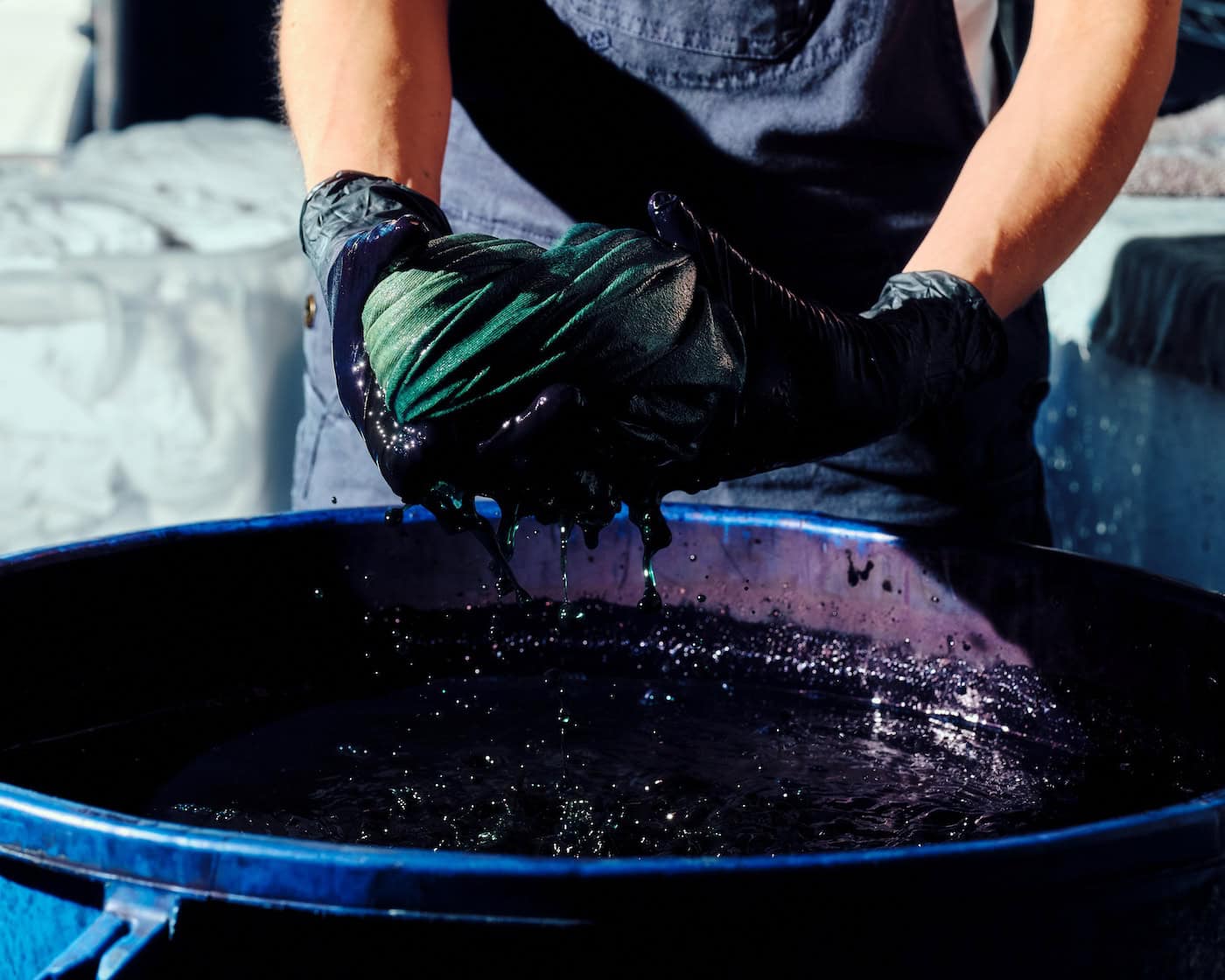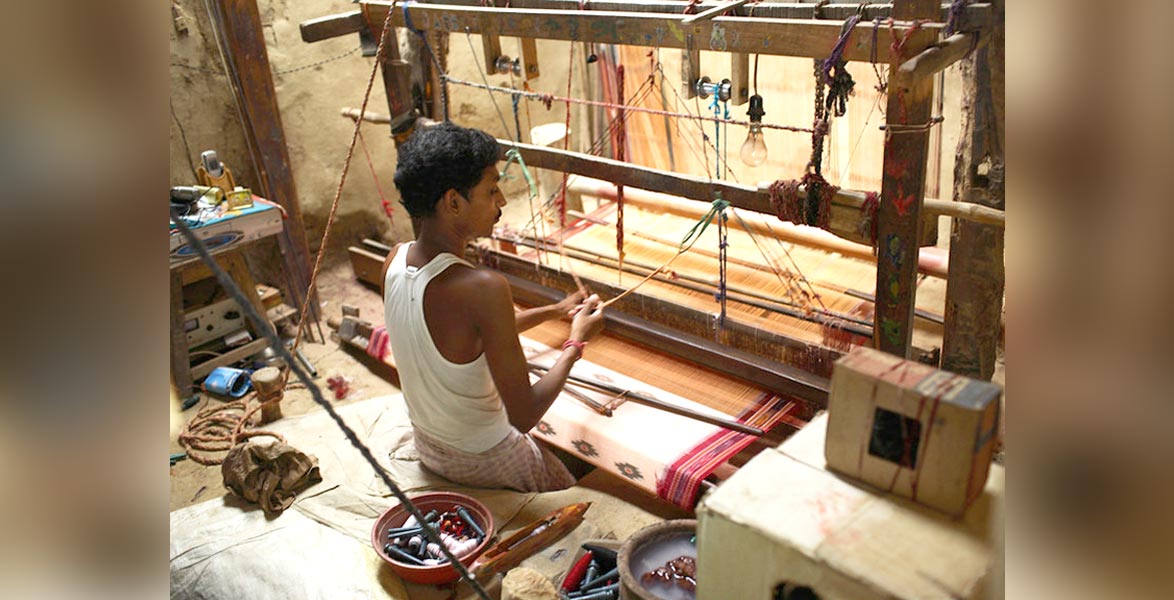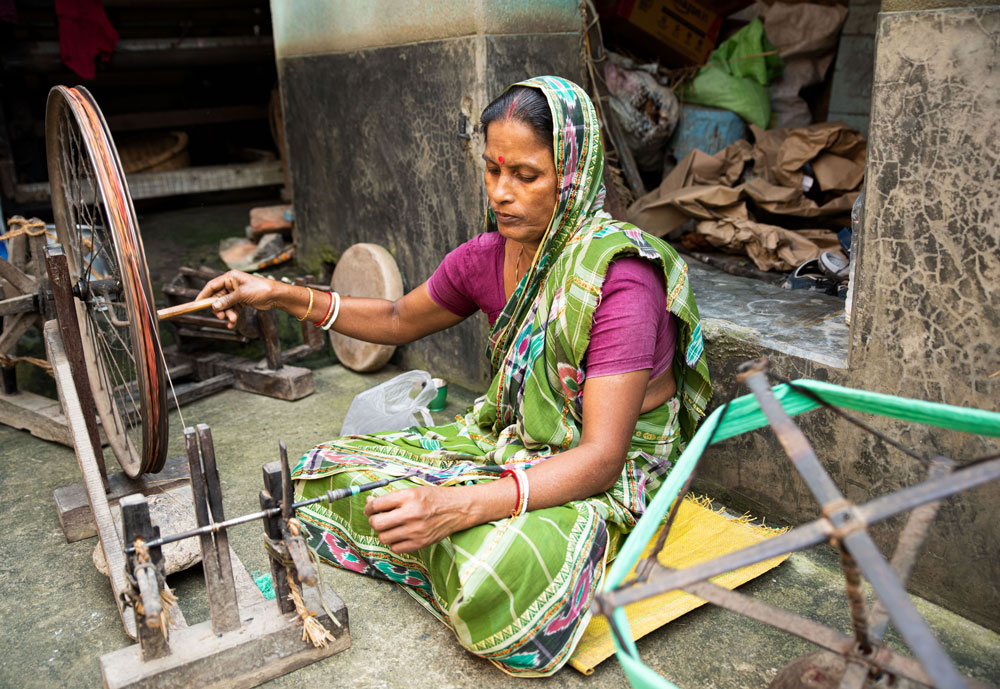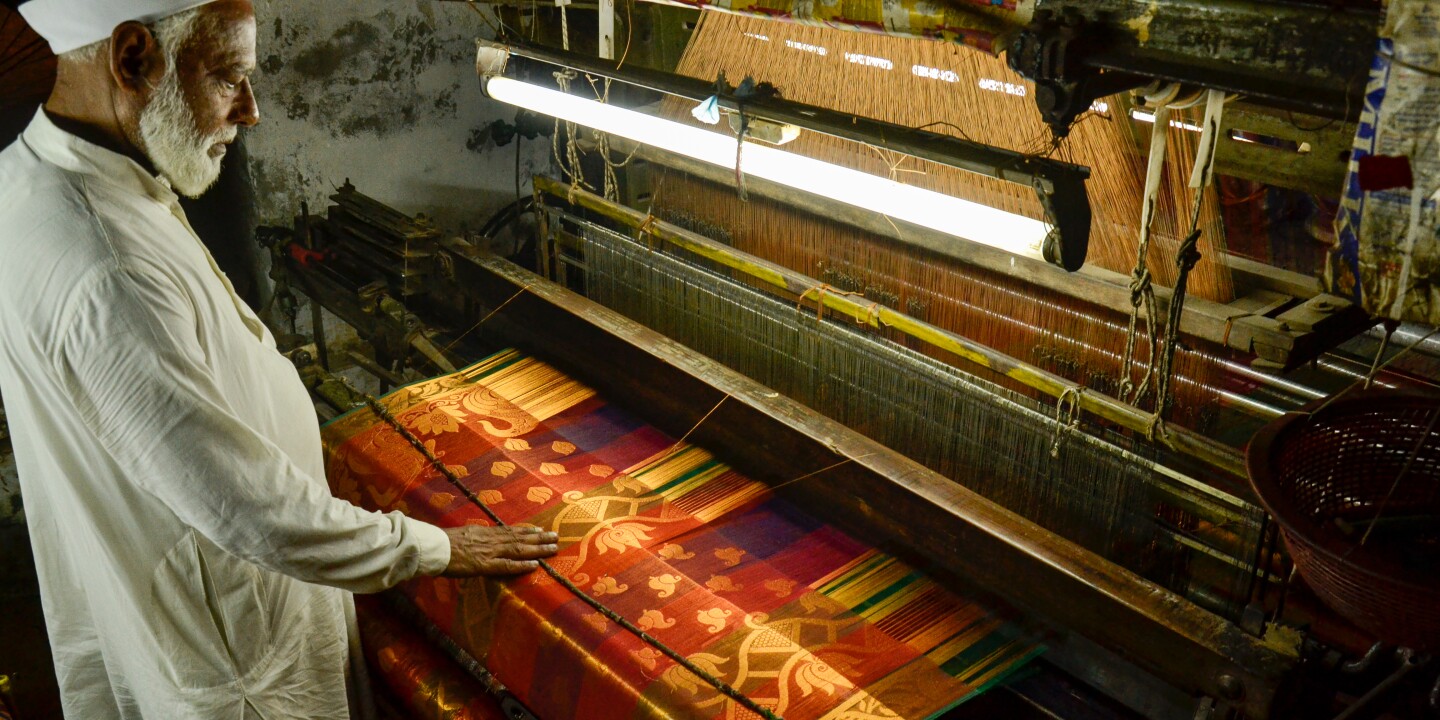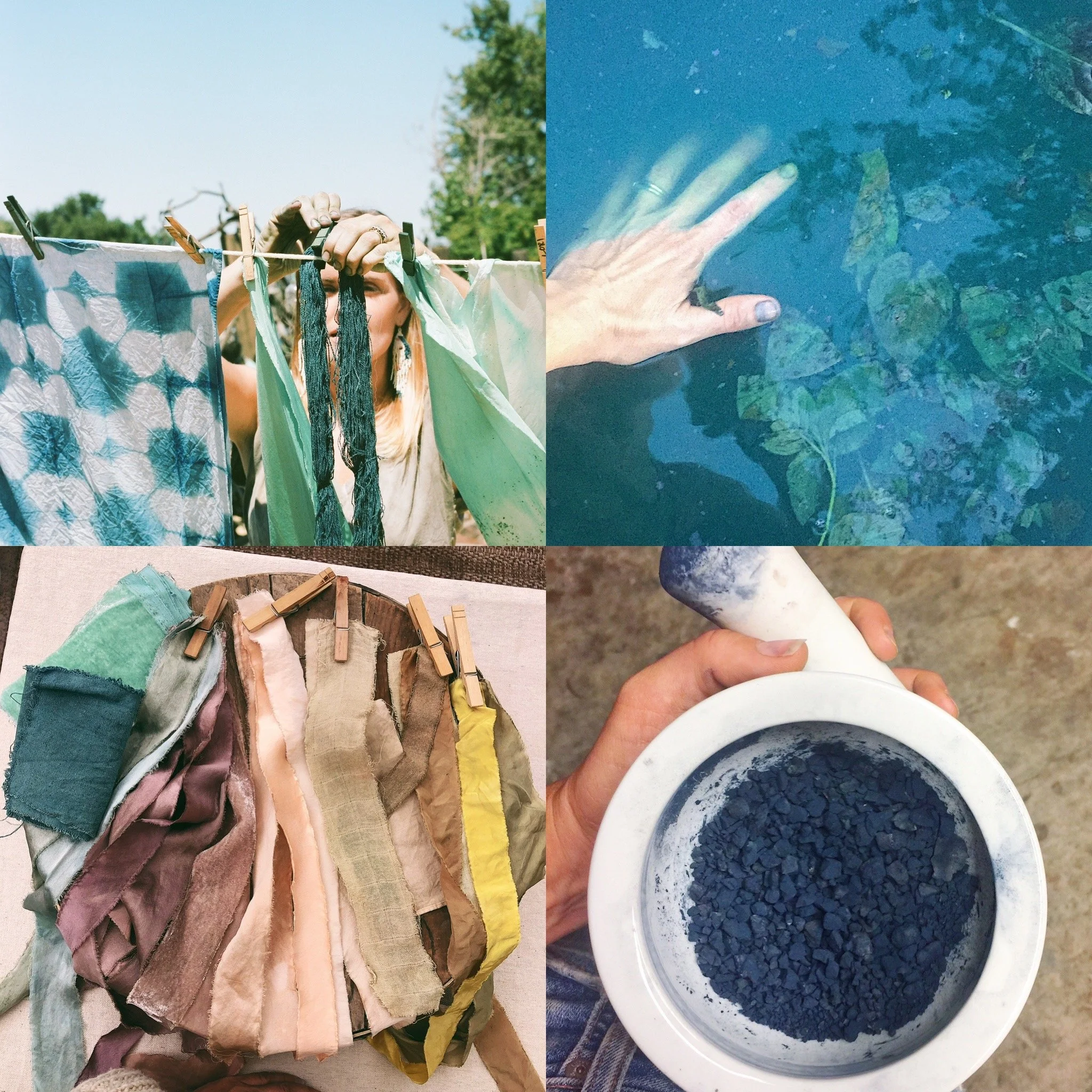Southern India Weavers
"Every thread is a prayer, every pattern a story passed down through generations of my family."
In the weaving clusters of Tamil Nadu, Karnataka, Andhra Pradesh, and Kerala, master weavers carry forward traditions that span centuries. These artisans, working primarily with silk and cotton, have developed region-specific techniques that reflect local aesthetics and cultural values.
The weavers of Kanchipuram perfected the korvai technique, where body and border are woven separately and interlocked, creating the sharp color contrasts and structural integrity that define authentic Kanchipuram sarees. In Mysore, artisans developed dobby and jacquard methods that produce clean geometric repeats with understated elegance.
Today, these weavers balance preservation with innovation, maintaining traditional techniques while adapting to contemporary needs. Many work in family units, with knowledge passing from grandparents to grandchildren in the intimate setting of home looms.
